
Maruti Suzuki Ignis Diesel: Road Test Review
- Apr 11, 2017
- Views : 29404

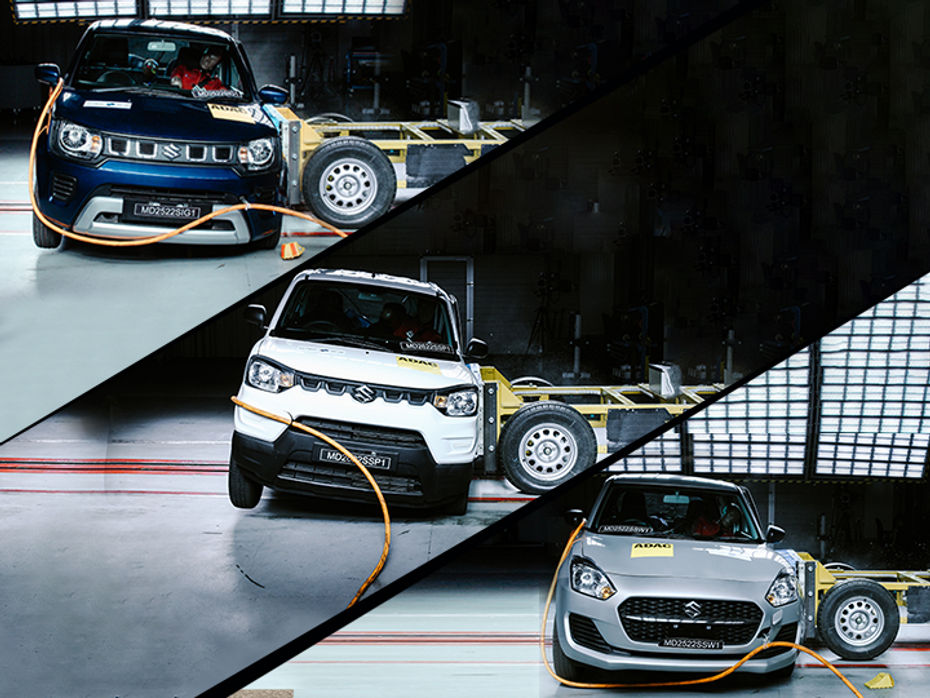
Maruti Swift’s safety rating drops from two to one star in the latest Global NCAP crash tests.
Ignis scored a one-star rating for adult safety and a zero-star rating for child protection.
Global NCAP is testing the Ignis for the Indian market for the first time.
S-Presso scored zero-star rating for child safety, but one star for adult safety.
Right when we thought it couldn't possibly get worse for Maruti and the performance of its cars in crash tests, we have received another round of ratings based on the more stringent Global NCAP crash tests.
And yes, you guessed it, the latest results are worse than the ones before. All Maruti models that were put through the test, namely the Swift, Ignis and S-Presso scored a single-star rating. The Swift and S-Presso have been retested, while the India-spec Ignis, which was earlier only tested for the South African market, has been assessed for the first time.
Let’s see the detailed lowdown of each model’s test:

The latest crash test result saw Maruti Swift’s mediocre two-star safety rating drop to a poor one star. The body shell of the hatchback was rated unstable and incapable of taking further load. The front collision test showed good protection to both the driver’s and passenger’s head and neck, while the chest showed weak protection for the driver, while it was adequate for the passenger.
Safety of the driver’s knees and the passenger’s right knee was rated marginal as they could come in contact with dangerous structures behind the dash. However the front passenger’s left knee showed good protection. In the side impact test, the head, abdomen and pelvis protection was good, while the chest protection was rated as poor.
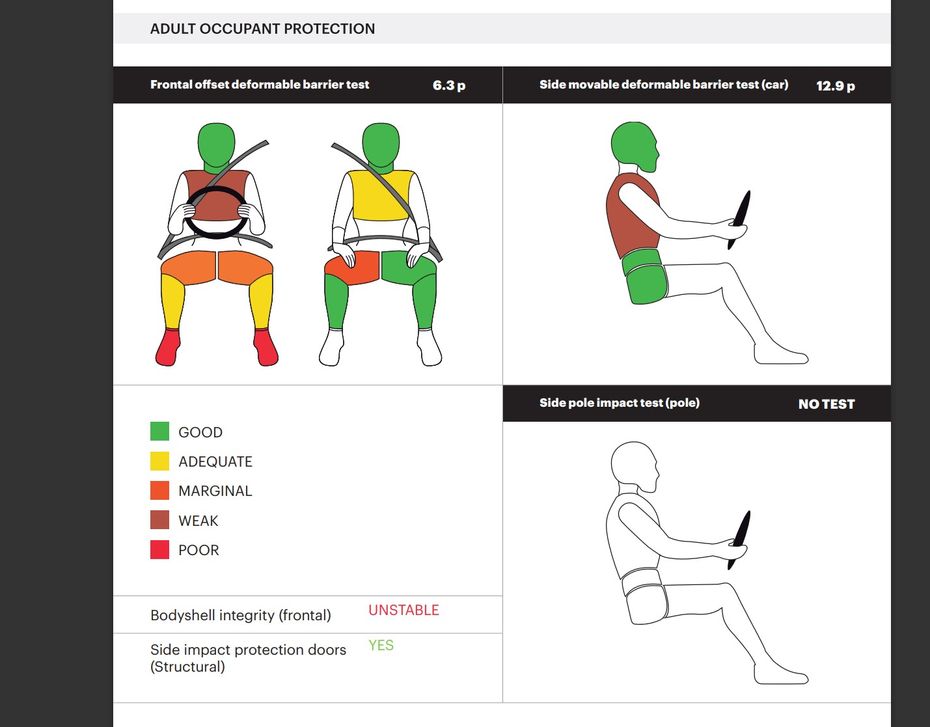
The side pole impact test wasn’t carried for the hatchback as it does not offer side head protection (read: curtain airbags) even as an option. The total score for adult protection was 19.19 out of the maximum 34 points, while for the children, it received a score of 16.68 out of 49.
The rearward-facing child seat for the three-year-old infant was able to prevent excessive forward movement and offered good and marginal protection to the head and chest, respectively. The child restraint system for the 18-month-old dummy, which was placed on a rearward-facing seat showed poor protection for the head and chest.
The model tested was the base-spec unit which gets safety features such as dual airbags, seat belt reminder, seat belt pretensioner and load limiter and ISOFIX child-seat mounts. However, the middle occupant in the rear seat still relies on a lap belt instead of a proper three-point seatbelt. Also, the co-driver airbag cannot be switched off to place a child seat, which was highlighted by Global NCAP.
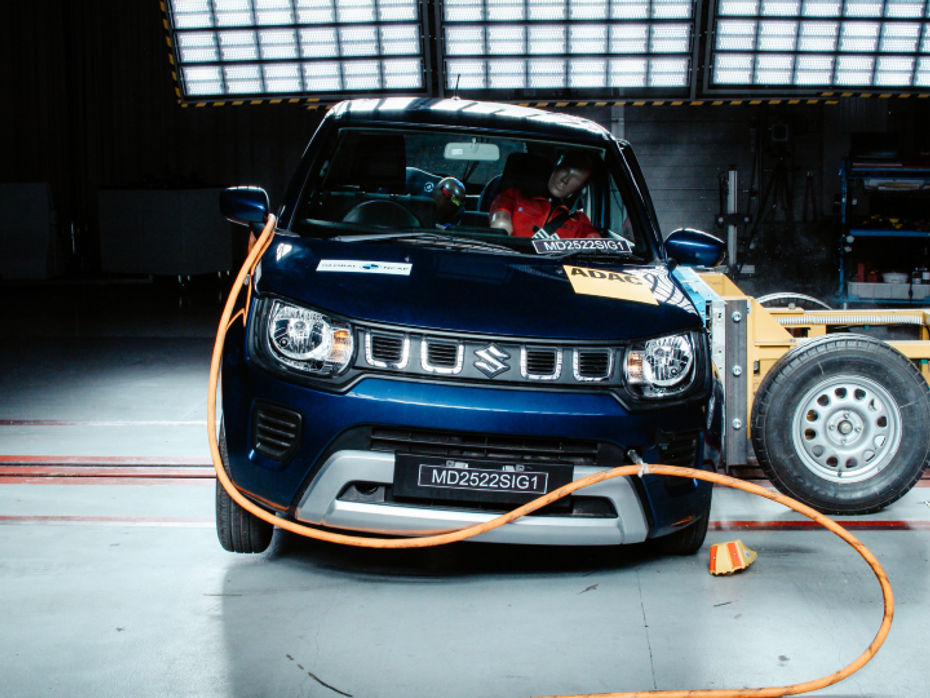
The Maruti Ignis was earlier tested by Global NCAP for the South African market, but it is the first time being tested in India. It bagged 16.48 points out of a total 34 for adult protection and scored a measly 3.86 out of 49 for child protection. Its overall body shell stability was deemed as unstable and its overall safety was rated at one star.
In frontal impact, the driver’s and passenger’s head and neck safety was rated good, while the driver’s chest showed weak protection and passenger’s chest showed adequate protection. Both the front passengers' knees received marginal protection because of possible danger from the structure behind the fascia, although its footwell area was rated stable.
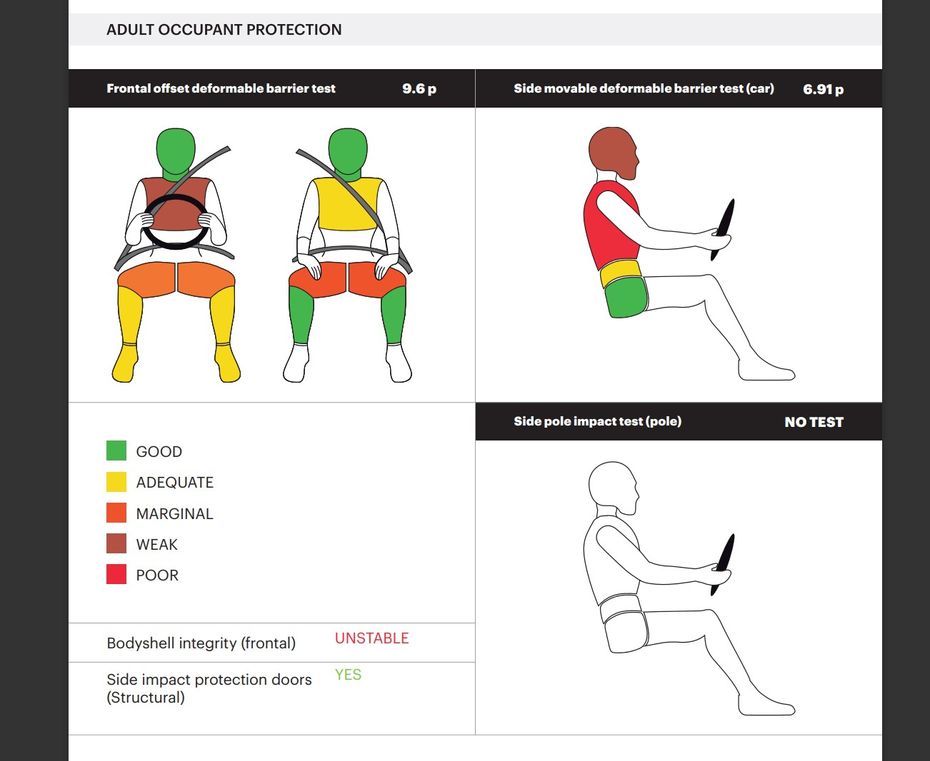
The side deformable barrier test offered weak and poor protection for the head and chest, respectively. The abdomen area received adequate protection, while protection around the pelvis area was good.
As was the case with the Swift, the side pole impact test wasn’t done for the hatchback as it does not offer curtain airbags even as an option. The front-facing child seat was fixed using ISOFIX anchorages and a support leg was able to prevent head exposure during head-on collision.
As for the child seat for the 18-month-old, it was installed rearward and was able to offer protection to the head during front collision. However, points were deducted due to the fact that Maruti failed to recommend Child Restraint System (CRS) for the tests.
The tested model was the base-spec unit that comes with safety features such as dual airbags, seat belt reminder, seat-belt pretensioner and laid limiter and ISOFIX child seat mounts. No ESC is available as standard, now mandatory for the new NCAP tests.
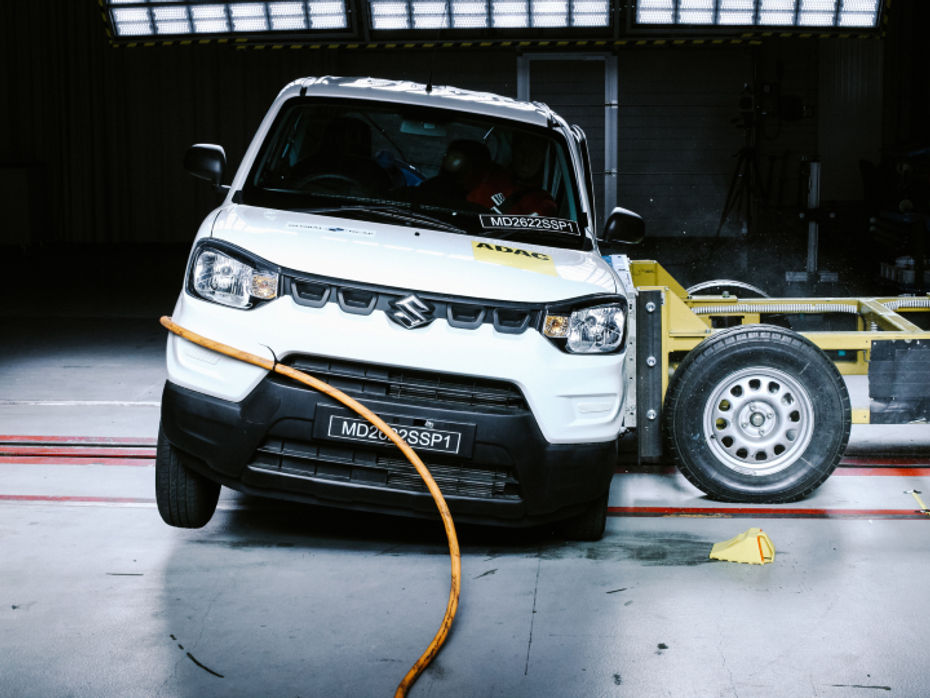
The Maruti S-Presso got a one-star overall safety rating, which is an improvement over its previous zero-star rating. It scored 20.03 out of a possible 34 points for adult safety, while it got 3.52 out of 49 for child safety. On frontal collision, the S-Presso’s body shell integrity was rated unstable and incapable of any further load.
The head and neck received good protection for both front passengers, while chest protection was rated poor and marginal for the driver and passenger, respectively. The driver’s knees had marginal protection only as it could come in contact with dangerous structures behind the dash.
However, the co-driver’s knees received good protection. The overall footwell area was rated unstable as the driver’s tibias showed marginal and adequate protection and passenger’s tibias showed adequate protection.
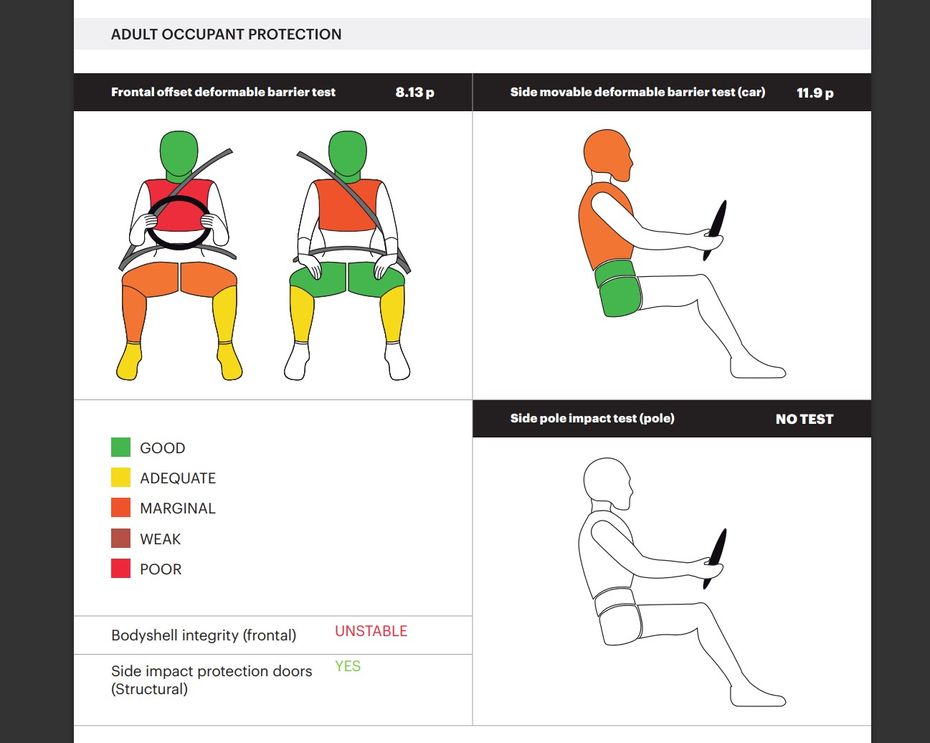
In the deformable barrier test, the S-Presso got marginal rating for the head and chest protection, while abdomen and pelvis protection was good. No side pole impact was done as there is no optional curtain airbags.
The poor child protection rating is owed to the fact that the S-Presso doesn’t get ISOFIX child mounts as standard. The three year old child seat was installed forward facing using an adult seat belt, which could not prevent the forward movement over the permitted limits. However, the seat for the 18 month old installed rearward using the adult seatbelt was able to offer good protection to the head, but poor protection to the chest.
Three-point seatbelts are missing for all seats and the car doesn’t allow disconnection of the passenger airbags in case of rearward-facing child restraint system.
Only dual front airbags, seat belt reminder and seat belt pretensioner and load limiter are offered as standard. ESC is not available as standard (limited to VXI and above) – another missing NCAP must have and the hatchback’s seat belt reminder is somehow not up to the NCAP requirements.
It's a bit disheartening to see Maruti fare so poorly in crash test results at a time when safety of not only the passengers but also the people around the vehicle is gaining more and more importance. It would be great to see Maruti up its safety quotient, especially for its entry-level models as they account for a huge portion of the vehicles on our roads.
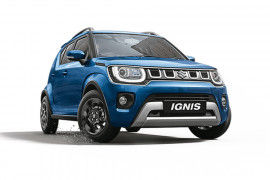

Maruti Suzuki Ignis Diesel: Road Test Review

Launched: Maruti Ignis Radiance Edition Carries Visual Updates And A...

Recap: Citroen’s Next EV, Upcoming Launches And All The...

Nearly 10,000 Maruti Cars Recalled To Fix Problem With Rear Brakes

Maruti Suzuki Updates Ignis Zeta With More Kit

All Your Questions About The Maruti Ignis’ Variants Answered

The 2020 Maruti Suzuki Ignis Packs In A BS6 Engine And A Facelift For...

Maruti Suzuki Ignis Facelift: 5 Things To Know

The Maruti Suzuki Ignis Gets Its First Update... Sort Of
 Maruti S-Presso
Maruti S-Presso
 Maruti Celerio
Maruti Celerio
 Maruti Swift
Maruti Swift
 Kia Syros
Kia Syros
 Skoda Kylaq
Skoda Kylaq
India's largest automotive community
 Honda City Apex Edition Reaches Dealerships, Here’s Everything You Need To Know About It!
Honda City Apex Edition Reaches Dealerships, Here’s Everything You Need To Know About It!
 BYD Sealion 7: Check Out How It Looks Like In Different Colours Via Real-Life Images
BYD Sealion 7: Check Out How It Looks Like In Different Colours Via Real-Life Images
 MG Windsor EV: The Hottest-selling EV In Its Segment, But Why?
MG Windsor EV: The Hottest-selling EV In Its Segment, But Why?
 Maruti e Vitara vs Tata Curvv EV: A Detailed Specification Comparison Between The Two Compact Electric SUVs
Maruti e Vitara vs Tata Curvv EV: A Detailed Specification Comparison Between The Two Compact Electric SUVs
 Maruti Dzire
Rs. 6.83 Lakh
Maruti Dzire
Rs. 6.83 Lakh
 Maruti Ertiga
Rs. 8.84 Lakh
Maruti Ertiga
Rs. 8.84 Lakh
 Maruti Swift
Rs. 6.49 Lakh
Maruti Swift
Rs. 6.49 Lakh
 Maruti FRONX
Rs. 7.52 Lakh
Maruti FRONX
Rs. 7.52 Lakh
 Maruti Brezza
Rs. 8.53 Lakh
Maruti Brezza
Rs. 8.53 Lakh
 Maruti Swift
Rs. 6.49 Lakh
Maruti Swift
Rs. 6.49 Lakh
 Maruti Baleno
Rs. 6.70 Lakh
Maruti Baleno
Rs. 6.70 Lakh
 Maruti Wagon R
Rs. 5.64 Lakh
Maruti Wagon R
Rs. 5.64 Lakh
 Tata Tiago
Rs. 4.99 Lakh
Tata Tiago
Rs. 4.99 Lakh
 Hyundai i20
Rs. 7.04 Lakh
Hyundai i20
Rs. 7.04 Lakh